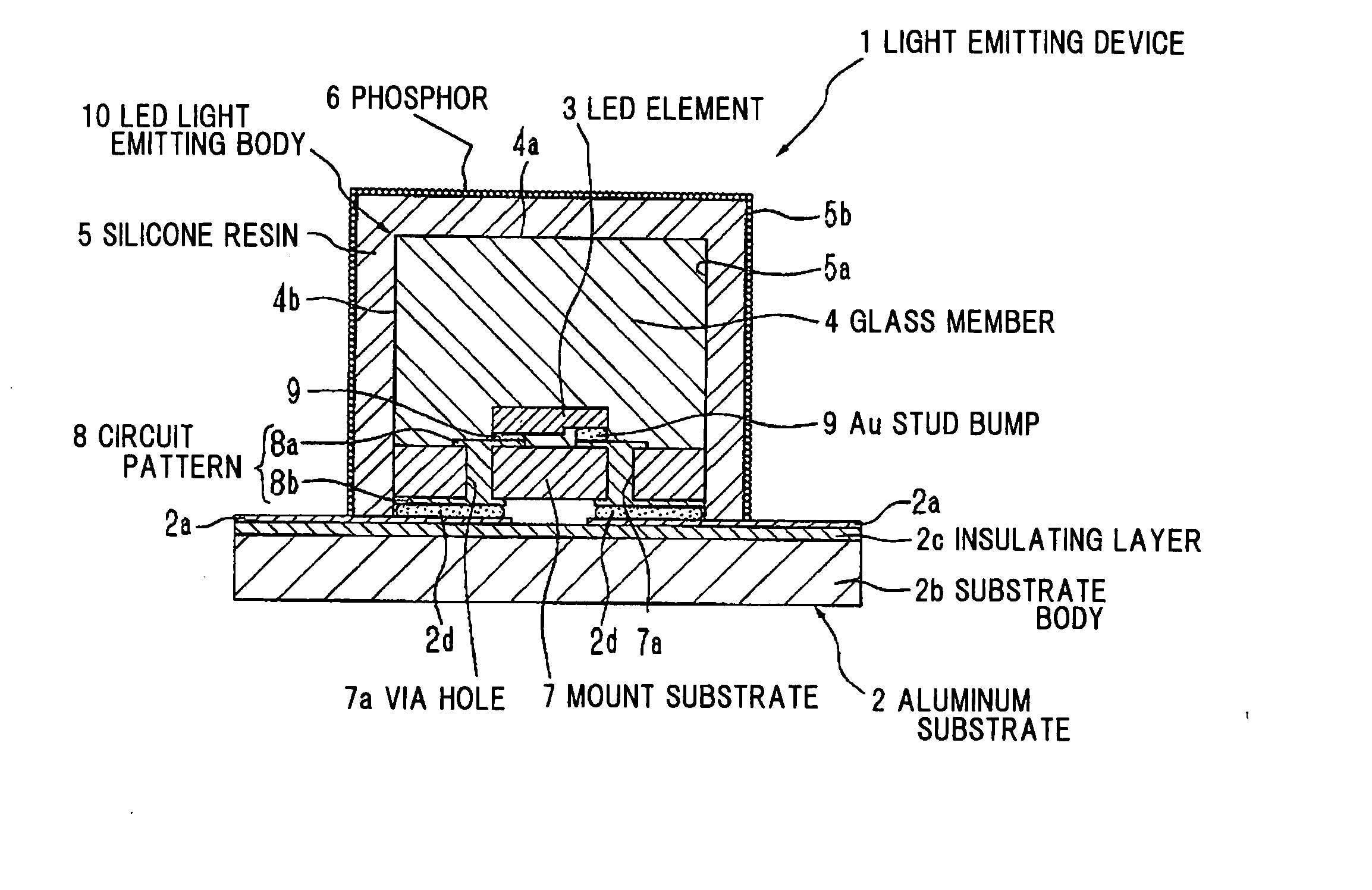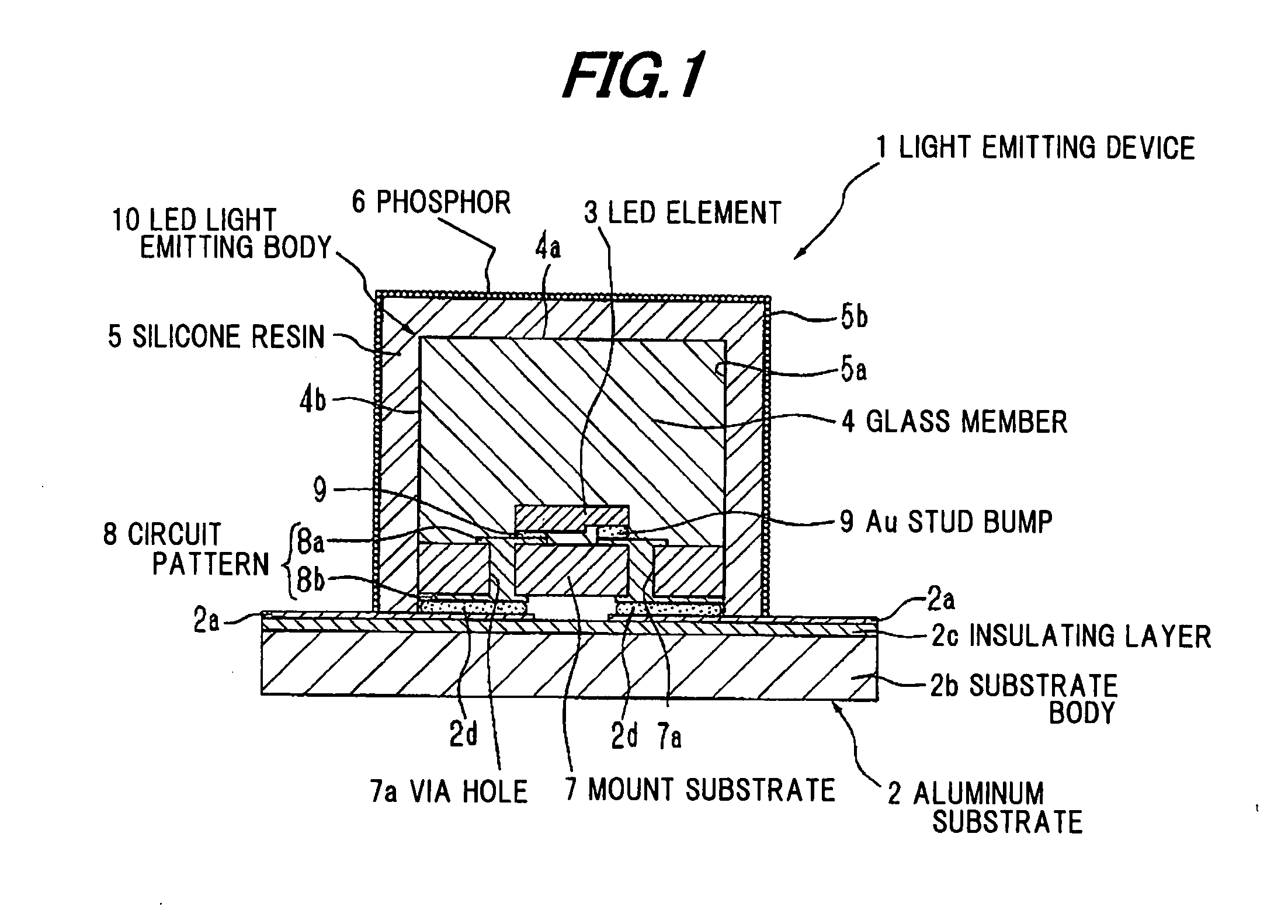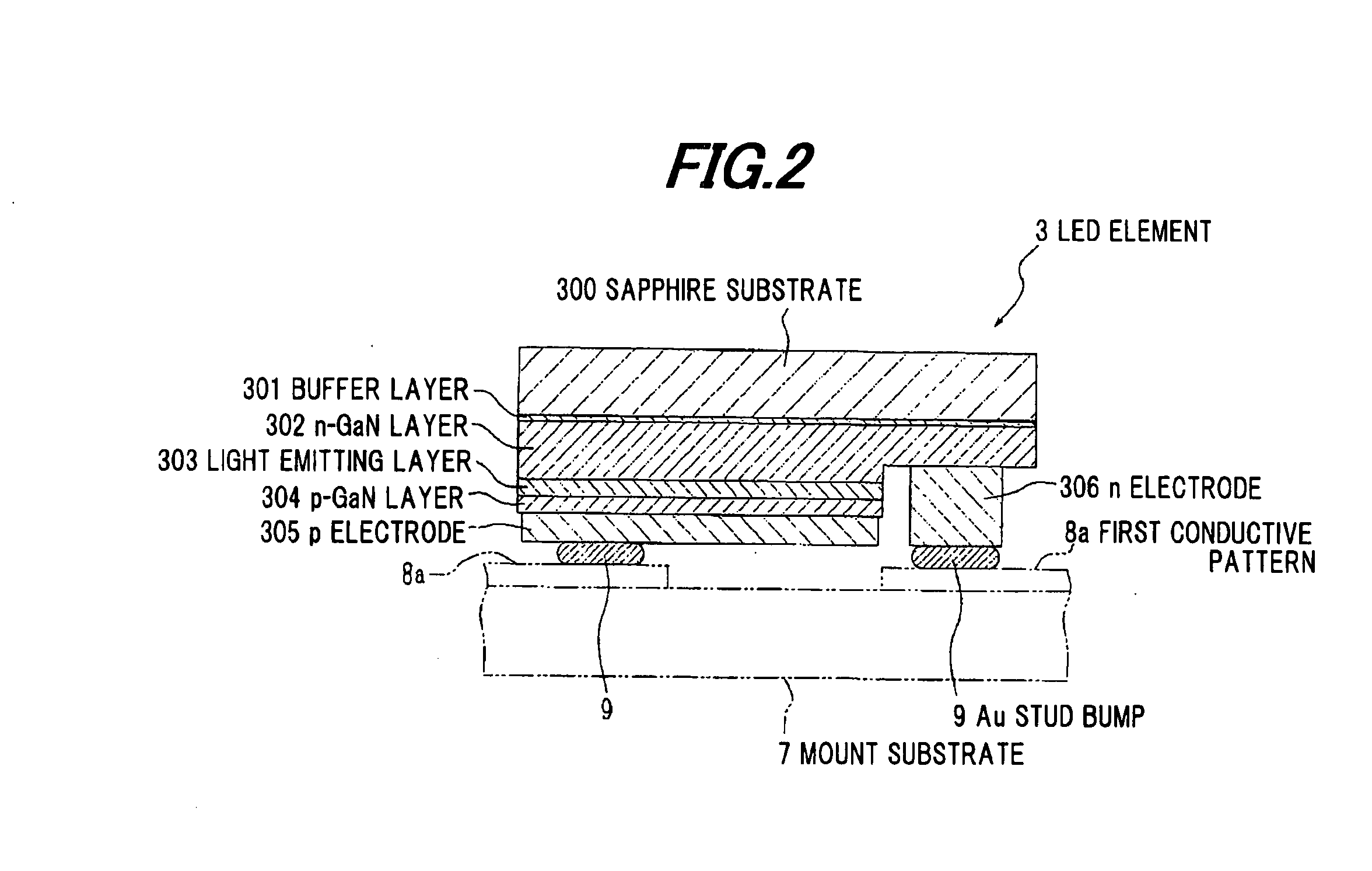Light emitting device, method of making the same, and light source device comprising the same
a technology light source, which is applied in the manufacture of electrode systems, electric discharge tubes/lamps, transportation and packaging, etc., can solve the problems of reducing excitation efficiency, phosphor also becoming high temperature at glass melting, and deterioration of translucent resin, so as to reduce color heterogeneity of light, reduce the size of light emitting device, and prevent sealing portion from deterioration
- Summary
- Abstract
- Description
- Claims
- Application Information
AI Technical Summary
Benefits of technology
Problems solved by technology
Method used
Image
Examples
Embodiment Construction
[0079] FIGS. 1 to 4 shows a first preferred embodiment according to the invention, and FIG. 1 is a cross sectional view schematically showing a light emitting device.
[0080] As shown in FIG. 1, a light emitting device 1 comprises a LED element 3 as a light emitting element mounted on an aluminum base substrate 2 (hereinafter referred to as “aluminum substrate 2”), a glass member 4 sealing the LED element 3, a transparent silicone resin 5 surrounding the opposite side of the LED element 3 to the aluminum substrate 2, and a powdery phosphor 6 overall attached to the opposite surface to the aluminum substrate 2 (outer surface 5b) of the silicone resin 5.
[0081] The aluminum substrate 2 comprises a substrate body 2b comprising aluminum, and an insulating layer 2c formed on the substrate body 2b. On the insulating layer 2c constituting a mounting surface of the aluminum substrate 2, a wiring portion 2a to supply an electrical power to the LED element 3 is formed. The wiring portion 2a co...
PUM
| Property | Measurement | Unit |
|---|---|---|
| temperature | aaaaa | aaaaa |
| temperature | aaaaa | aaaaa |
| size | aaaaa | aaaaa |
Abstract
Description
Claims
Application Information
 Login to View More
Login to View More - R&D
- Intellectual Property
- Life Sciences
- Materials
- Tech Scout
- Unparalleled Data Quality
- Higher Quality Content
- 60% Fewer Hallucinations
Browse by: Latest US Patents, China's latest patents, Technical Efficacy Thesaurus, Application Domain, Technology Topic, Popular Technical Reports.
© 2025 PatSnap. All rights reserved.Legal|Privacy policy|Modern Slavery Act Transparency Statement|Sitemap|About US| Contact US: help@patsnap.com



